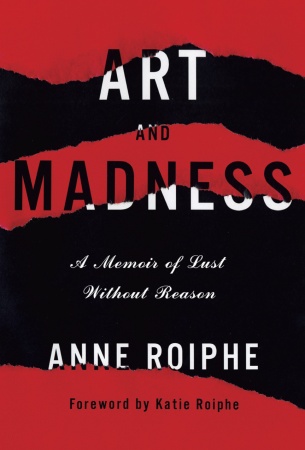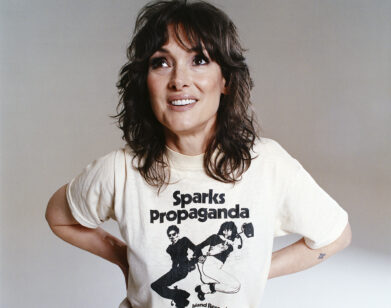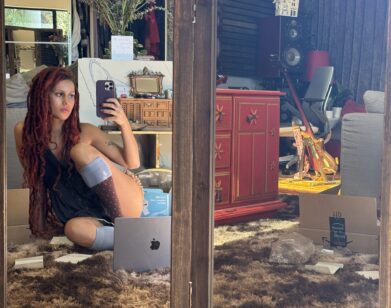Anne Roiphe’s Lust, Passion, and Very Good Memory

IMAGES COURTESY OF MARY ELLEN MARK AND RANDOM HOUSE
Between Charlie Sheen and John Galliano, the last month we have been overexposed to artists whose craft has driven them crazy. In her new book, Art and Madness: A Memoir of Lust Without Reason (Nan A. Talese/Doubleday), Anne Roiphe explores her relationship with the manic literary geniuses of her era. From parties with George Plimpton and Norman Mailer and weekends in the Hamptons with Larry Rivers to the renowned Algonquin roundtable, Roiphe tapped into the edgy artistic energy of the ’50s and ’60s. Yet behind the glamour and three-martini lunches lurked a lonely, desperate side to the fame these figures cultivated. Roiphe brilliantly captures the poetry of the period, where a little insanity is the price of creative success, even when it ruins lives (and livers).
YOUNG: What is the relationship between creativity and addiction?
ROIPHE: It’s a complicated relationship. You can be creative and not addictive, or addictive and not creative. Most addicted people do not produce anything of remarkable note. However, there probably is a slight connection between the high-wire, super sensitivity, open to everything and too much, and slightly fragile soul of the artist and the need to self-medicate, which can lead to bad trouble either in drugs, or alcohol. So it’s not that there’s no connection, it’s just that we can’t make too much of it because it isn’t the addiction that’s the issue, it’s the fragility of some people who do artistic work, who end up in rehab somewhere or other.
YOUNG: And are those same artists bound by any kind of rules in their life or art?
ROIPHE: Everybody is bound by some social rules. But I think that artists need some kind of freedom to explore their minds and that some of them tend to take that freedom to live a little more openly or a little more dangerously, sometimes a lot more self-destructively, than other people. That doesn’t mean they’re not bound by some kind of rules; their rules may be, “I need twelve martinis before I can go out of the house.” But the kinds of rules they are bound by are probably not as sensible or safety-oriented as the rules that most people tend to make for themselves and keep.
YOUNG: Which is the kind of rock-star attitude of the literary figures who are very much celebrities of the New York you lived and describe. How and why do you think that’s changed?
ROIPHE: Well, I think there’s a lot less romance about the drunken artist than there used to be. And a lot of the younger writers that I hear of are married with children and don’t tend to be trying to explode the evening into a thousand pieces. I think that certainly the artists of the ’40s, ’50s and ’60s were fighting a very conformist society, which didn’t give them enough space to live or create, and they were bucking all kinds of spoken and unspoken rules. I don’t see that so much now. I think that for the most part we’re now seeing artists trying to do good work and think of themselves as workers like other people are workers and not taking the role of being the exceptional genius, which is the romance that gets a lot of people into trouble.
YOUNG: Yes, and I also think there’s a lot less anger. You describe the ’50s as a time when many important things were kept secret. Did that project some of the anger that fueled this art?
ROIPHE: Anger was certainly part of a legitimate response to the social repression. There was a place you were supposed to be and a person you were supposed to be, and there wasn’t a lot of room to change that, or to aspire, or to create within those forms. If you lived almost anywhere in America, there were certain things expected of you—behaviors, ways of dress, ways of relating to the opposite sex, ways of relating to your children—everything was very determined and tight. After the sexual revolution, the ’60s, the Vietnam war, much of the country became freer in their behavior and thoughts, and in their willingness to accept different ethnicities, genders, codes, hairstyles. Really. When I grew up, you needed to have straight hair. It’s symbolic of needing to be like everyone else, needing to look like everyone else. And what that meant was looking like the dominant ruling class in America. Then it exploded open. You can tell from any fashion magazine, all kinds of looks are acceptable. The fact that variety is acceptable changes the anger and makes it possible for artists to do their work without having to protest conformity.
YOUNG: What was the moment that led you to leave behind this chaotic, self-destructive world of art?
ROIPHE: It’s a personal decision. For me, it was I had a child, I wanted that child to be surrounded with love and sanity, and I needed to find a place to raise that child and to have more children. That was what I wanted. Now, is that a better value than somebody’s desire to paint a fresco in the subway? Not necessarily, but it was mine.
YOUNG: How do you separate art from madness? Can it be done?
ROIPHE: I don’t think it’s necessary to. What is true is that the artist, in order to create, probably needs to look freshly, to feel freshly, and in order to do that you can’t be too tight, too controlled. There has to be a space for imagination and for flight of fancy. If you have that space, you may also have a space for melancholy, for anger, out of control, for fear that isn’t as kept under cover as it might be. And all those emotions swirling around in your head can create a kind of madness that either works to help your art, or if it gets too extreme, destroys you. So the connection is simply, everybody has a certain amount of madness within them, and everybody has a certain amount of sanity if they can find it. The question is to balance it so that it works fruitfully, it doesn’t destroy you. For some creative people, the mixture becomes destructive. We see it in Hemingway, we see it in a lot of people.
On the other hand, you have to always remember that this is a country where some huge proportion of the population is on anti-depressants, and they’re not all artists by any means. So emotional troubles exist in people even when they can’t begin to write a story. I don’t want to make too much of it, I just think that there is some and always has been a kind of necessary madness in order to create. Thomas Mann pointed this out in his great book Doctor Faustus, which is the story of a musician who makes a bargain with the devil. He is determined to create great symphonies, great music, become really famous, but he also gets syphilis, which causes him to go crazy. But the syphilis is a part of his gift; the devil has given him both. On the other hand, an awful lot of people got syphilis and went mad and never created anything. I think we have inherited a certain romantic view of the artist, in which we also romanticize the madness of the artist. That, I would look at a little skeptically.
ANNE ROIPHE’S ART AND MADNESS: A MEMOIR OF LUST WITHOUT REASON IS OUT IN BOOKSTORES TODAY.






